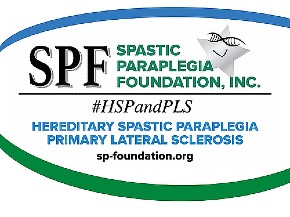With the advent of novel, quantitative neuroimaging techniques, subtle brain changes can now be reliably assessed, measured and tracked over time non-invasively, without exposing individuals to any radiation or giving them contrast intravenously. Computational magnetic resonance imaging (MRI) techniques have not only allowed the unprecedented characterization of cortical gray matter changes in PLS, but also the assessment of how the “internal wiring” of the brain i.e. the white matter is affected. The Computational Neuroimaging Group (CNG) in Trinity College Dublin, led by Professor Peter Bede and sponsored by the Spastic Paraplegia Foundation, has recently completed a large neuroradiology study in PLS and published their findings in the Journal of Neurology (Springer). The title of their report is “Supra- and infra-tentorial degeneration patterns in primary lateral sclerosis: a multimodal longitudinal neuroradiology study” and is available open-access at https://link.springer.com/article/10.1007/s00415-024-12261-z or using DOI: 10.1007/s00415-024-12261-z.
The novelty of this study is the identification and detailed characterization of cerebellar changes in PLS. The cerebellum is a large structure at the “bottom” of the brain which has a multitude of physiological roles, including the coordination of fine motor movements, eye movements and balance, but it also has a significant role in speech, swallow, respiratory and certain cognitive functions. The authors have not only detected cerebellar cortical changes, but the involvement of deep cerebellar nuclei which are essentially small “switches” or “relay stations” between the cerebellum and other brain regions. Furthermore, the authors have demonstrated how the cerebellum gets “disconnected” from the rest of the brain in PLS. While PLS is traditionally only associated with primary motor cortex degeneration and the malfunction of descending motor fibers, this study highlights that brain pathology in PLS is much more widespread than previously thought and extends well beyond primary motor regions. The practical, clinical relevance of characterizing cerebellar changes in PLS is that changes in this brain region are very likely to contribute to some of the cardinal symptoms of the condition including gait, dexterity and bulbar impairment. From an academic standpoint, the study of cerebellar dysfunction may implicate certain genetic variants, generate hypotheses about disease development and potentially suggest overlap with other conditions. From a clinical perspective, raising awareness of cerebellar dysfunction in PLS may inform rehabilitation strategies, fall prevention and targeted multidisciplinary interventions. Professor Bede and the authors of this study have specifically expressed their gratitude to the Spastic Paraplegia Foundations for supporting this study and acknowledged all patients who have participated, expressed an interest, or followed this study. They have committed to continue their work in mapping longitudinal changes with the hope of understanding how the disease may spread over time, so that viable therapeutic targets may be identified.
Our Impact since our inception...
-
Dollars Raised
Over 12,000,000 dollars for research!













